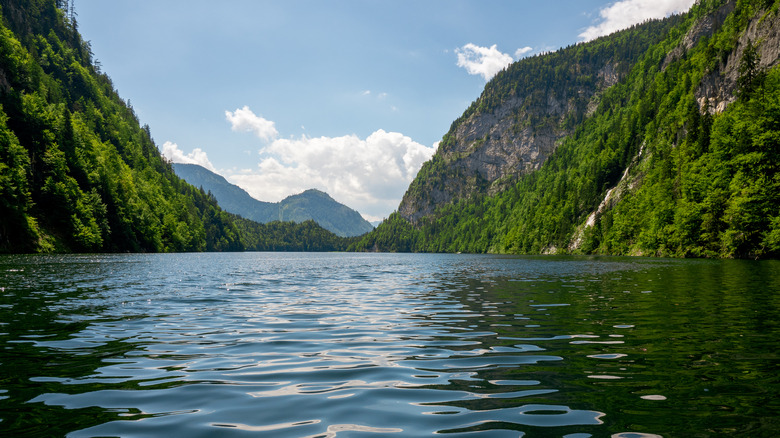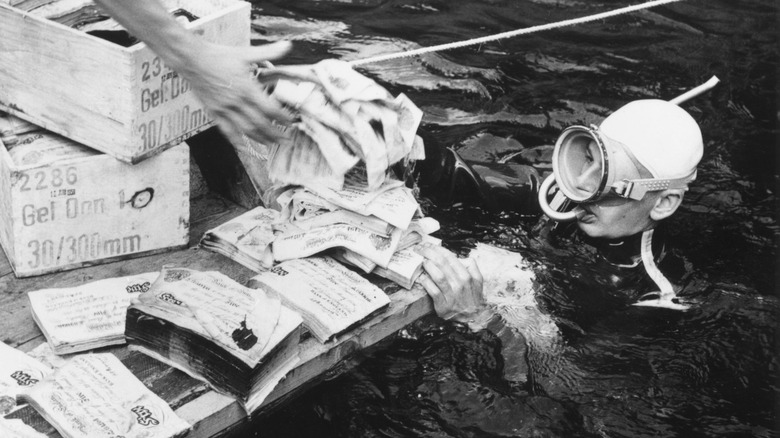The Real Reason We Can't Find The Nazi Gold Allegedly Thrown Into Lake Toplitz
Throughout Nazi Germany's existence it engaged in massive industrial-scale looting. Museums, government buildings, and personal residences within German-occupied territory (and Germany itself, in the case of citizens sent to concentration camps) were ransacked for anything of value, such as money, precious metals including gold, and works of art. When it was Germany's turn to be invaded, measures were taken to ensure that its war spoils were kept away from the Allies. Much of its gold was sent abroad to fund fleeing officials and officers.
Many caches still in Europe were hidden away, with any that are unaccounted for or rumored to exist becoming a source of fixation for treasure hunters (via Live Science). In the post-war years Lake Toplitz, located high in the Austrian Alps, became the suspected location of billions of dollars in gold, platinum, and jewelry (via War History Online). While there are many treasures stolen by the Nazis that have yet to be found, whether these particular suspicions are true remains to be seen.
Lake Toplitz was already used by the Germans to hide counterfeit money
With that being said, it's clear that Germany used Lake Toplitz as a sort of watery safe deposit box during World War II. In 1959 divers discovered around £700 million in fake British pounds below the lake's surface (pictured above). They were part of a shelved plan to trigger severe inflation in Britain by air-dropping massive amounts of counterfeit money over population centers (via We Are The Mighty). If the lake was used to hide that then, at least in the minds of many prospective treasure hunters, surely the Nazis could have hidden gold there as well.
It's true that the Germans could have, but the reality is that Lake Toplitz presents many obstacles to finding the truth. It has a maximum depth of over 300 feet, and recreational scuba divers can only descend safely to about 130 feet, says ScubaDiving.com. A dense concentration of logs and other debris covers the lake bottom. Five have been killed in pursuit of the supposed treasure, which led to diving being banned in the lake, which itself is frozen for six months out of the year (via ABC). In the early 2000s further searches were allowed to be conducted, including one with a mini-submarine, but these similarly failed to turn up anything conclusive.

